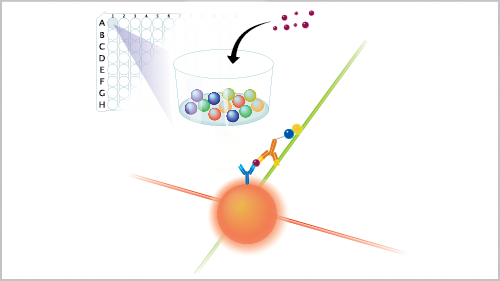Luminex multiplex assays are advanced multiplexing options for identifying and quantifying multiple analytes in biological samples. They can analyze 500 targets in a single run.
Luminex assays employ microsphere beads to capture the target antigens. As these beads are minute and have low density, they facilitate solution-based kinetics and provide rapid analysis.
Luminex-based assays are vital, particularly in the Covid-19 phase. Luminex cytokine assays can identify the “cytokine storm,” a characteristic observed in critical Covid-19 patients. Preclinical Luminex assays are widely used in animal testing.
Researchers are now increasingly using clinical Luminex assay for analyzing analytes during clinical trials. As with any advanced system, customers may face challenges with Luminex assays. There are three crucial aspects of Luminex assay that can be challenging: assay diluent, sensitivity, and consistency.
So let us understand how Luminex multiplex assay resolves these challenges.
Assay Diluent
As multiplex assays involve simultaneous analysis of multiple proteins in a single assay, assay diluent becomes a crucial component in Luminex multiplex assays. Assay diluent helps in overcoming many challenges faced in multiplexing analysis. These challenges include cross-reactivity, non-specific binding, and antibody interference.
Interference happens when a substrate hinders the ability of the assay to detect the target analyte. Interference can occur due to non-specific binding, antibody interference, or cross-reactivity. Moreover, complex samples inherently contain interfering factors. Even reagents and equipment can be the source of interference. No matter where the interference comes from, they produce unreliable signals. Diluents provided with Luminex multiplex assays are specifically designed to overcome all these challenges. Luminex reagents are developed to reduce assay interferences and ensure optimal performance.
Sensitivity
Sensitive multiplex assays ensure that low-level analytes can be measured precisely in biological samples. If assays are not sensitive enough, clinicians can miss these analytes completely. Sensitivity becomes crucial while assessing disease states. Most analytes expressed in disease states are present at very low levels.
Luminex multiplex assays are adept in analyzing low levels of analytes in biological samples. They provide assay kits which are now the industry gold standard. Moreover, they have a library consisting of thousands of antibodies to be screened for optimal antibody pairs.
Consistency
Consistent results entrust confidence in the ability of a particular assay to generate reliable results for data analysis. Luminex multiplex assays provide increased consistency across a wide range of experiments. They are subjected to extensive validation studies. Luminex assays are precise and sensitive in all sample types.
Luminex tests all batches for linear standard curve, broad dynamic range, and low background. Luminex assays are tested with consistent control values during assay development. Hence, researchers can compare the data over time.
The Road Ahead
Analyzing multiple analytes in complex biological matrices is a challenging task. Performing such complex experiments is bound to face some challenges. Platforms such as Luminex offer solutions for most of these challenges. They are a game-changer in the ever-competing drug development space. They provide some vital solutions to critical issues and help to provide better test results.











